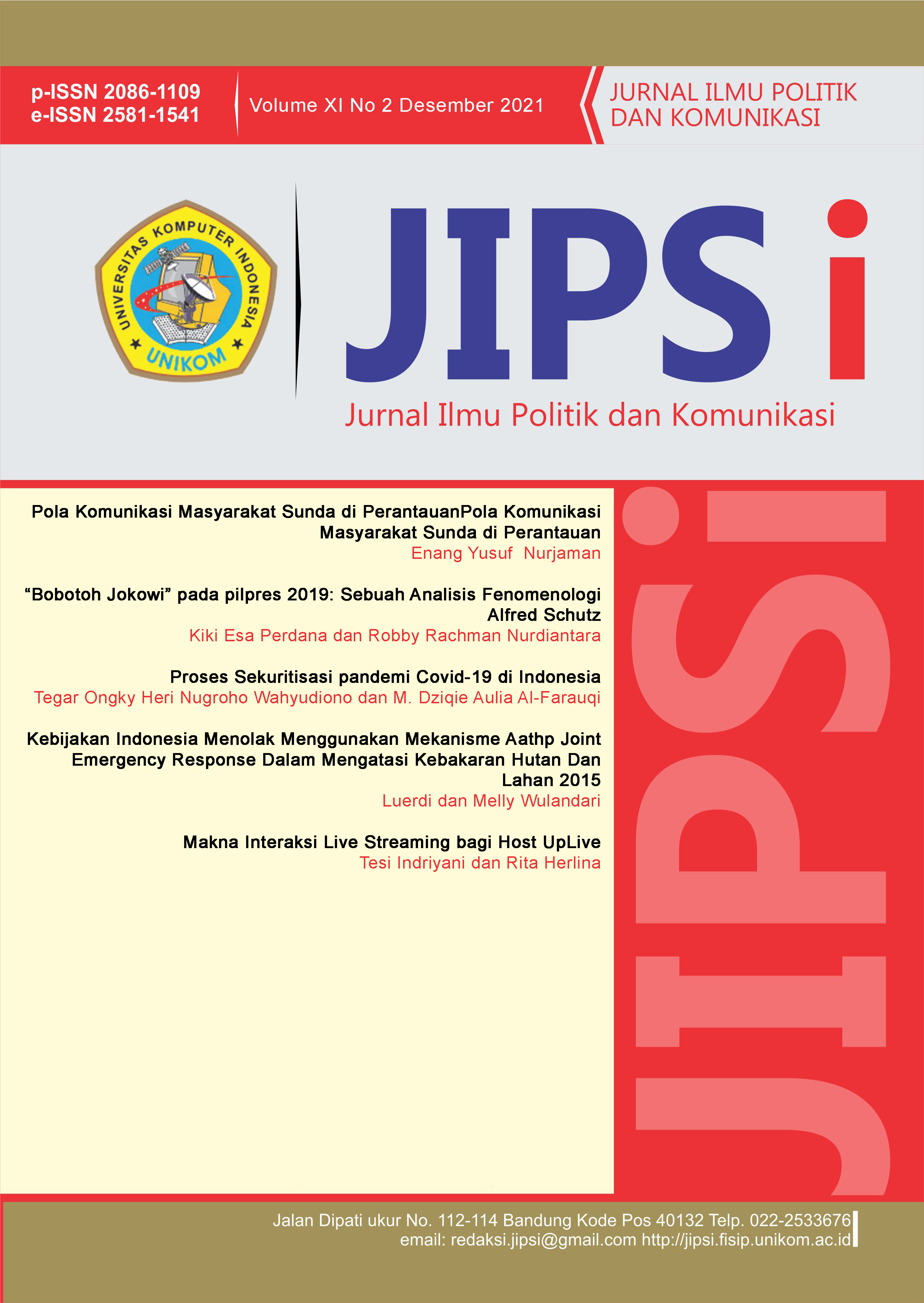KEBIJAKAN INDONESIA MENOLAK MENGGUNAKAN MEKANISME AATHP JOINT EMERGENCY RESPONSE DALAM MENGATASI KEBAKARAN HUTAN DAN LAHAN 2015
Main Article Content
Abstract
This paper aims to explain Indonesia’s rejection to resolve its 2015 forest and land fire disaster under the mechanism of Joint Emergency Response provided in the ASEAN Agreement on Transboundary Haze Pollution. The haze caused by forest and land fires in Indonesia raised threats to not only itself but also states in the region of Southeast Asia. As it was declared as a regional problem, ASEAN then responded by creating a common framework called the ASEAN Agreement on Transboundary Haze Pollution in 2002 and Indonesia was the last ratifying the agreement in 2014; more than a decade after its inception. Indonesia, however, refused to pick the AATHP Joint Emergency Response to tackle the 2015 disaster within its territorry despite its most serious recurring disaster since 1997. This research applied the qualitative method with a causal correlation analysis. The research applied Charles O. Lerche and Abdul A. Said’s national interest theory. The research found that Indonesia’s rejection was driven by its national interests such as image, economy and politics which were much more important than others. Instead, Indonesia preferred the domestic efforts and bilateral cooperation to respond to it. The paper argues that the Southeast Asian regional institution is not able to offer incentives overtaking states’ domestic-oriented national interests.
Keywords: Forest and land fire, haze, Joint Emergency Response, national interest.

